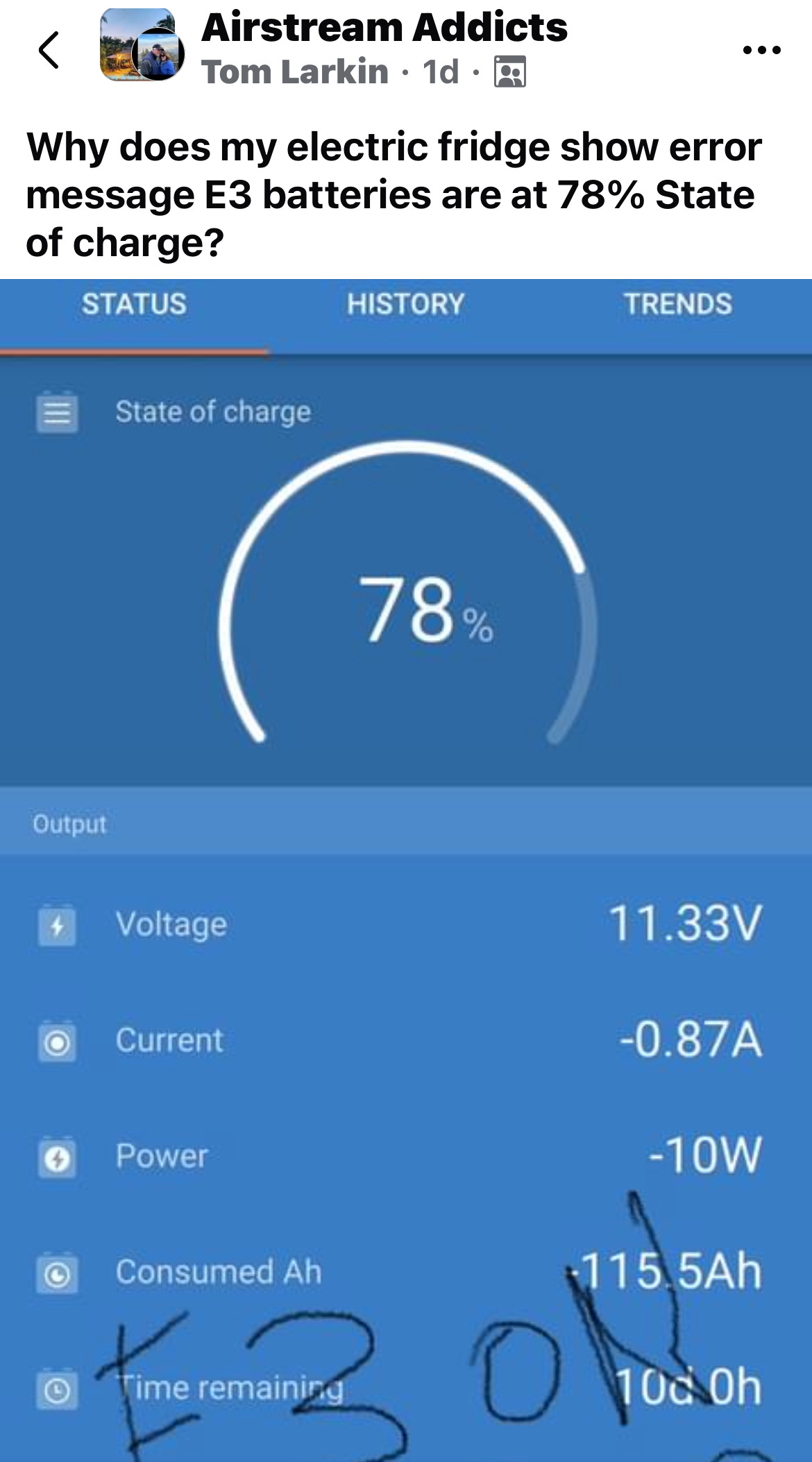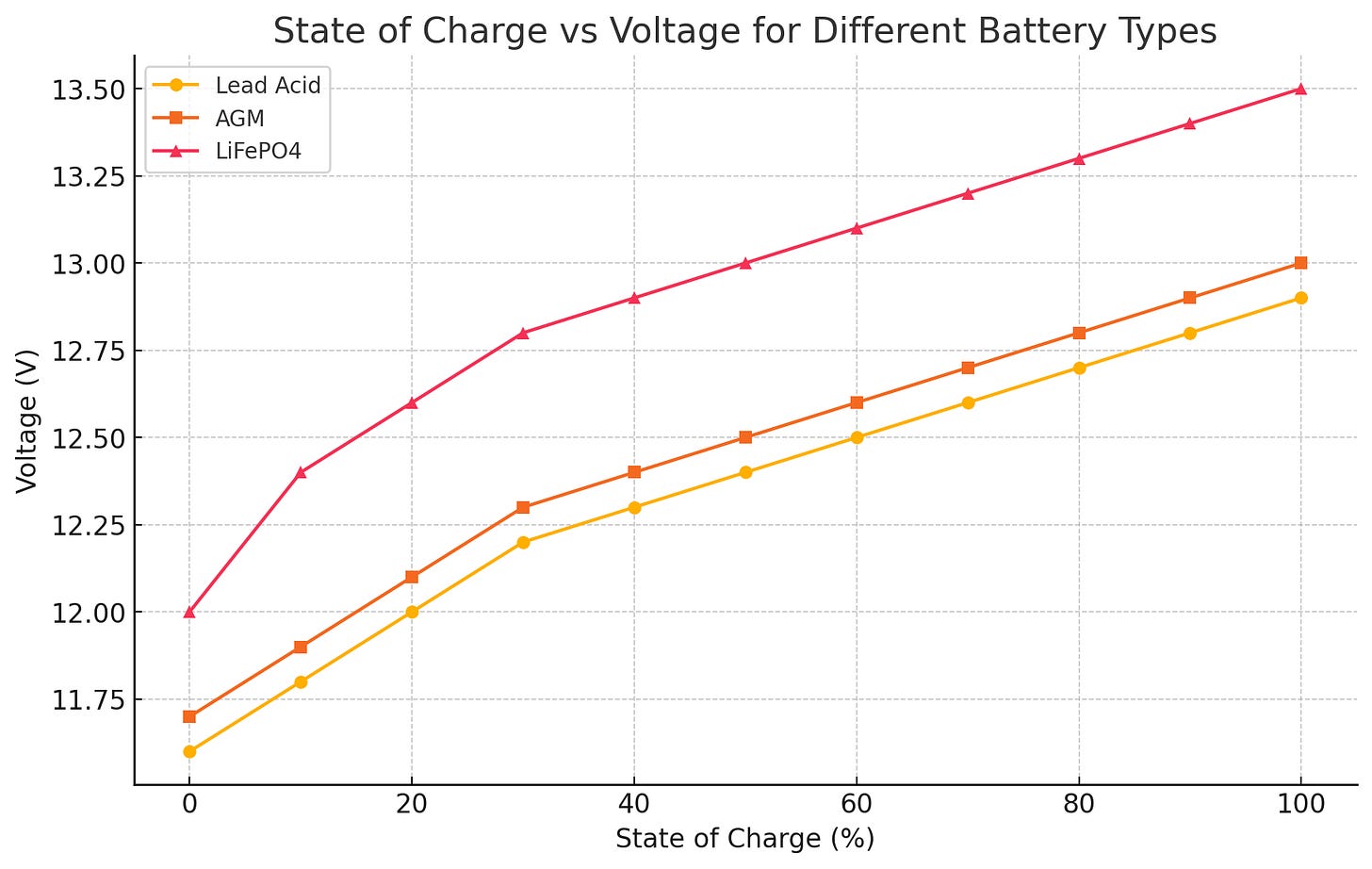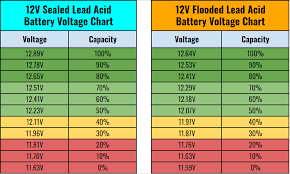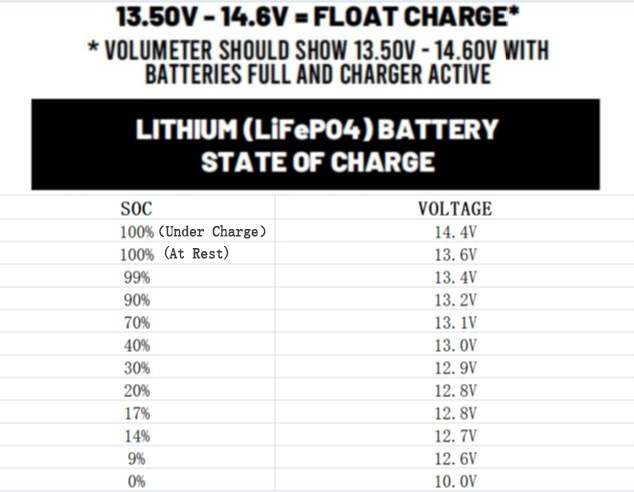Don’t always believe your State-of-Charge meter!
Time to confirm that your battery level meter is set up properly…
Everyone,
Don’t believe what your State-of-Charge meter tells you until you confirm calibration and check it against a digital meter for actual battery voltage.
I saw this post last week…
Here’s the problem with your Battery Level indicator. If the batteries really measured 11.33 volts, then they’re not at 78% State-of-Charge. They’re actually close to being completely discharged. Batteries are not like a gas tank in your car where 1/2 on your gas gauge means you have half of your mileage left.
My AI generated graph
So I asked ChatGPT to create a SoC graph with the 3 main house battery types in an RV, and it only took a few seconds to generate. It’s the only use I’ve found for using AI in my articles so far. Note that 11.33 volts is off the bottom of the scale, so your battery is probably less than 10% SoC, not 79% as indicated by your charge meter.
Here’s what SoC charts look like
Most of these charge level meters have a battery chemistry setting (Lead Acid, AGM or Lithium) as well as a calibration procedure that requires you charge the batteries fully and then let the SoC meter confirm voltage calibration.
So if your battery numbers look strange (like the example above) you should find the operators manual and follow any charge meter calibration instructions.
Let’s play safe out there… Mike










Over the > 5 years of having an LFP battery in my travel trailer, I have found the SOC “out of sync” problem to be a real nuisance and found that re-synching it is not worth the effort most times. Fortunately, it is pretty easy to just go by the battery voltage which ranges from 13.3 to 13V from over 90-40% SOC as the battery discharges. When I see I’m getting below 13V, I start thinking about recharging. It could be there is a problem with my SOC meter or an intermittent connection but I haven’t been able to track down the cause of my chronic “out of sync” issue. Anyone else have this problem or insights as to why it happens? The only device in my setup that bypasses the shunt is my SOC meter.
Most SOC indicators use a shunt to measure current in and current out. They work pretty well but can get out of sync over time. Also, something like a smoke or CO detector may bypass the shunt which would cause the SOC meter to get out of sync much faster. As Mentioned, there is a process to resync these meters which normally involves fully charging or fully discharging the batteries. The other possibility is that the meter is configured for a much larger battery bank than you actually have.